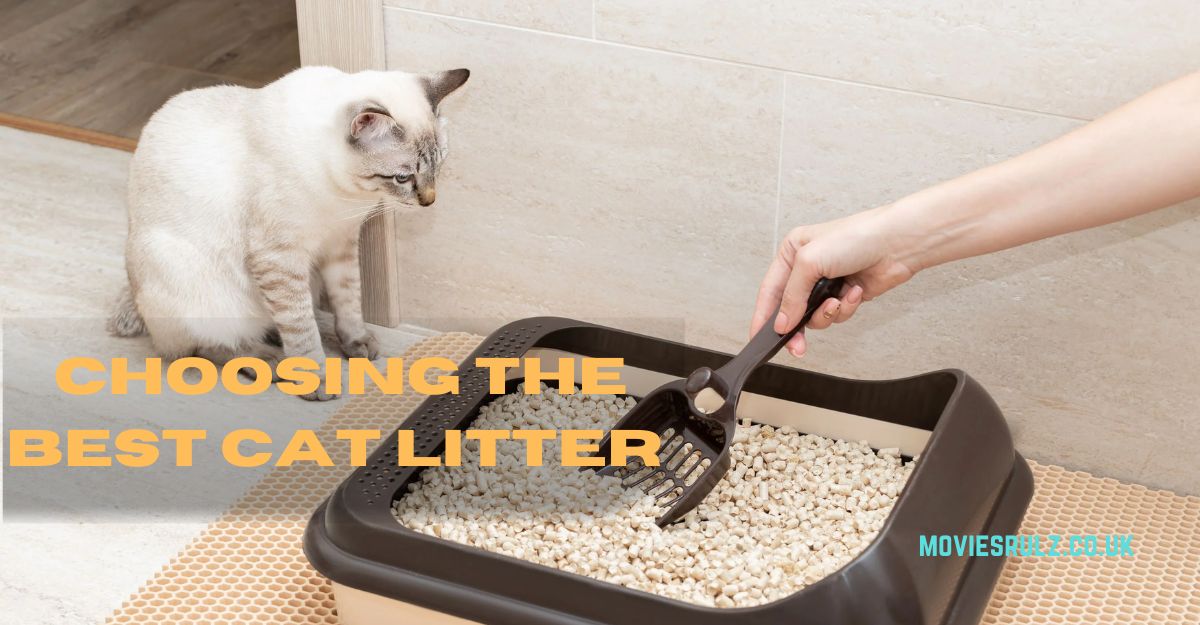Food
The Ultimate Guide to Choosing the Best Cat Litter

Cats are more than just pets—they’re family. But as adorable as our feline friends are, caring for them comes with responsibilities, including managing their litter box. Believe it or not, the type of cat litter you choose can make a huge difference in your cat’s happiness, health, and overall convenience.
If you’ve been overwhelmed by the numerous cat litter options on the market, you’re not alone. This guide will walk you through the types of cat litter available, factors to consider when choosing the best one, and tips for maintaining a clean and odor-free litter box for your feline companion.
Types of Cat Litter
Understanding the different types of cat litter is the first step to making an informed decision. Each type has its unique benefits and drawbacks, making them suitable for particular cats and lifestyles.
A. Clumping Litter
Clumping litter is one of the most popular choices among cat owners. Made from materials like bentonite clay, it forms solid clumps when in contact with moisture, making waste removal easy.
Advantages
- Simple cleanup: Scoop out clumps without needing to replace the entire litter.
- Odor control: Traps odors effectively when used correctly.
- Affordable: Generally budget-friendly and widely available.
Disadvantages
- Dust: Many clumping litters produce fine dust, which can irritate sensitive cats and humans.
- Heavy: A full litter box can be challenging to carry.
Best for Cats:
This is an excellent choice for most cats, but it’s especially suitable for cats who dislike lingering odors and are comfortable with grainy textures.
B. Silica Gel Litter
Another popular option is silica gel litter, often recognized by its crystal-like appearance. It absorbs moisture by trapping liquids and odors inside the crystals.
Benefits
- Low maintenance: Requires infrequent changes.
- Lightweight: Easier to handle than traditional clay litter.
Drawbacks
- Cost: More expensive than standard clumping litter.
- Texture: Some cats find the texture uncomfortable.
Ideal for Busy Cat Owners:
Silica gel litter is perfect for pet owners with demanding schedules, as it requires less frequent scooping and replacement.
C. Plant-Based Litter
Environmentally conscious cat owners often gravitate toward plant-based litter made from materials like corn, wheat, pine, or recycled paper.
Environmental Impact & Effectiveness
- Eco-friendly: Biodegradable and compostable options are available.
- Less dust: Lower dust levels compared to traditional alternatives.
Drawbacks
- Consistency: May not clump as effectively as clay litter.
- Higher cost: Often priced higher than traditional litters.
Suitable for Cats with Sensitivities:
Cats with respiratory issues or allergies benefit from the reduced dust and natural materials of plant-based litter.
D. Biodegradable Litter
Biodegradable litter overlaps with plant-based options but includes other natural materials like sawdust and walnut shells.
Features & Cost
- Sustainable: It breaks down quickly and reduces landfill waste.
- Cost: Prices vary depending on the material.
Comparison to Traditional Litters
Biodegradable litter offers comparable odor control but may lack the clumping power of clay-based options.
Factors to Consider When Choosing Cat Litter
To make the right choice, it’s essential to evaluate your cat’s preferences and your household needs. Consider the following factors while shopping for cat litter.
A. Odor Control
Odor control is one of the most critical factors for ensuring a pleasant environment for both you and your cat. Look for litter with natural odor neutralizers like baking soda or activated charcoal. Regular scooping and proper litter box placement can also reduce unwanted smells.
B. Dust Levels
High-dust litter can cause respiratory discomfort for sensitive cats and humans. If dust is a concern, opt for low-dust options like silica gel or plant-based litter. Some clay litters also advertise “99% dust-free” formulas, which may be worth exploring.
C. Clump Strength
Strong clumps make scooping easier and help maintain a clean box. To test clumping strength, add water to a small amount of litter and check if it forms a solid mass.
D. Price
Cat litter can range from a few dollars for basic clay options to premium alternatives with higher price tags. Striking a balance between quality and budget is key. Investing in high-quality litter may save money in the long run by lasting longer and requiring fewer replacements.
Tips for Cat Litter Maintenance
A suitable litter doesn’t stop at selection—it’s equally important to maintain the litter box properly to ensure your cat’s happiness and hygiene.
A. How Often to Change Cat Litter
For clumping litter, scoop out waste daily and replace the entire batch once every 1-2 weeks. Depending on odor and moisture levels, non-clumping litters may require more frequent changes.
B. Proper Litter Box Cleaning Schedule
- Weekly Deep Clean: Empty the litter box and scrub it with mild soap and warm water. Avoid harsh chemicals that can leave a residue.
- Dry Completely: Ensure the box is dry before refilling it with fresh litter to prevent clumping issues.
C. Best Practices for Odor Control and Litter Box Placement
- Place the litter box in a well-ventilated but quiet area, away from your cat’s food and water.
- Use an odor-neutralizing mat under the box to catch spills and reduce lingering smells.
- Consider having one litter box per cat, plus an additional box to accommodate busy households.
Choosing the Right Cat Litter Makes a World of Difference
The right cat litter can improve your cat’s health, your home’s cleanliness, and your overall peace of mind. By understanding the types of litter available, evaluating essential factors, and maintaining the litter box properly, you can create a comfortable and stress-free environment for your furry friend.
We’d love to hear about your experiences—what’s your go-to cat litter? Share your tips and questions in the comments below! And don’t forget to sign up for our newsletter for more expert pet care tips and advice.
-

 Entertainment9 months ago
Entertainment9 months agoMoviesRulz: Your Ultimate Guide to Streaming Blockbusters Online
-

 Sports8 months ago
Sports8 months agoReddit Soccer Streams and Alternatives for Sports Fans
-

 Sports9 months ago
Sports9 months agoViprow.us.com Odds: Understanding Sports Betting Benefits
-

 Buisness9 months ago
Buisness9 months agoPokémon Infinite Fusion Calculator: Your Ultimate Guide
-

 Entertainment10 months ago
Entertainment10 months agoNhentai.nef: Understanding Its Role and Impact in Digital Media
-

 Education9 months ago
Education9 months agoHow to Use JoinPD Engaging Classroom Experiences
-

 Entertainment9 months ago
Entertainment9 months agoIncestflix: Understanding the Controversy and Its Implications
-

 Buisness9 months ago
Buisness9 months agoThe Online Market Business in the UK: Statistics, Growth and Opportunities
